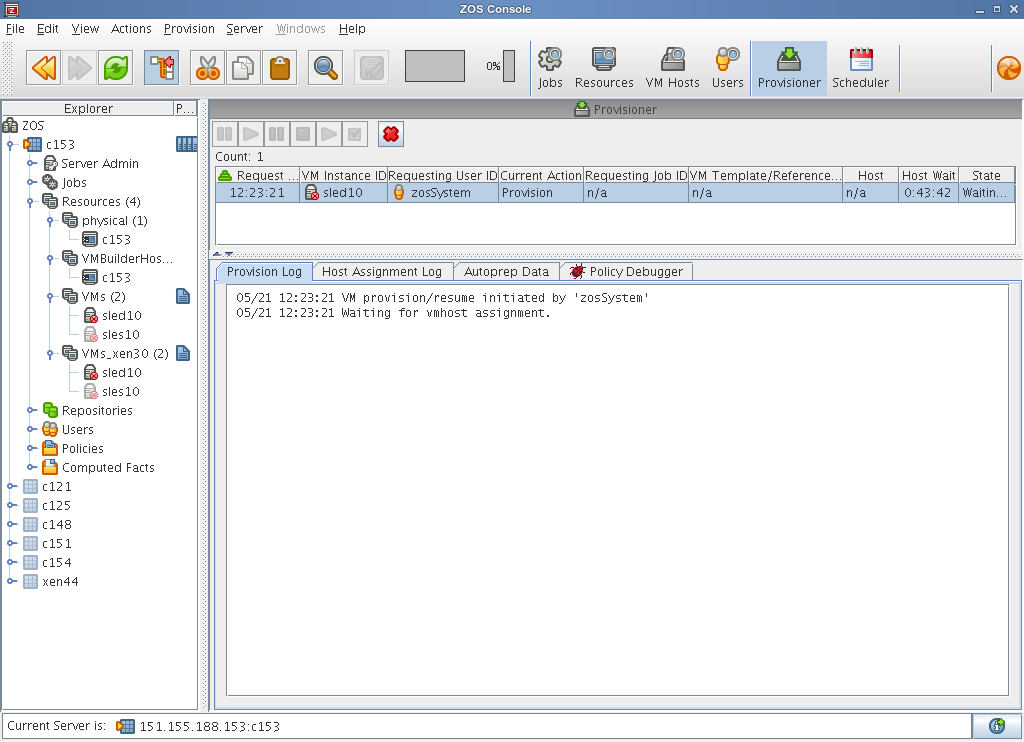2.2 Understanding ZENworks Orchestrator Functionality
2.2.1 Resource Virtualization
Host machines or test targets managed by the Orchestrator Server form nodes on the grid (sometimes referred to as the matrix). All resources are virtualized for access by maintaining a capabilities database containing extensive information (facts) for each managed resource.
This information is automatically polled and obtained from each resource periodically or when it first comes online. The extent of the resource information the system can gather is customizable and highly extensible, controlled by the jobs you create and deploy.
The ZENworks Virtual Machine Builder is a service of VM Management that allows you to build a VM to precise specifications required for your data center. You designate the parameters required: processor, memory, hard drive space, operating system, virtualization type, if it’s based of an auto-install file, and any additional parameters. When you lauch the build job, VM Builder sends the build request to a machine that meets the hardware requirements of the defined VM and builds the VM there.
For more information, see Building a Virtual Machine
in the Novell ZENworks Orchestrator 1.2 Virtual Machine Management Guide.
2.2.2 Policy-Based Management
Policies are aggregations of facts and constraints that are used to enforce quotas, job queuing, resource restrictions, permissions, and other user and resource functions. Policies can be set on all objects and are inherited, which facilitates implementation within related resources.
Facts, which might be static, dynamic or computed for complex logic, are used when jobs or test scenarios require resources in order to select a resource that exactly matches the requirements of the test, and to control the access and assignment of resources to particular jobs, users, projects, etc. through policies. This abstraction keeps the infrastructure fluid and allows for easy resource substitution.
Of course, direct named access is also possible. An example of a policy that constrains the selection of a resource for a particular job or test is shown in the figure below. Although resource constraints can be applied at the policy level, they can also be described by the job itself or even dynamically composed at runtime.
Figure 2-8 Resource Selection Policy Example
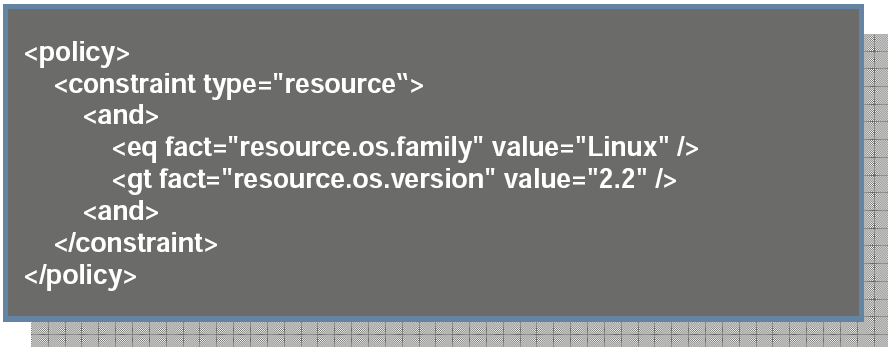
An example of a policy that constrains the start of a job or test because too many tests are already in progress is shown in the following figure:
Figure 2-9 Job/Test Start Policy Example
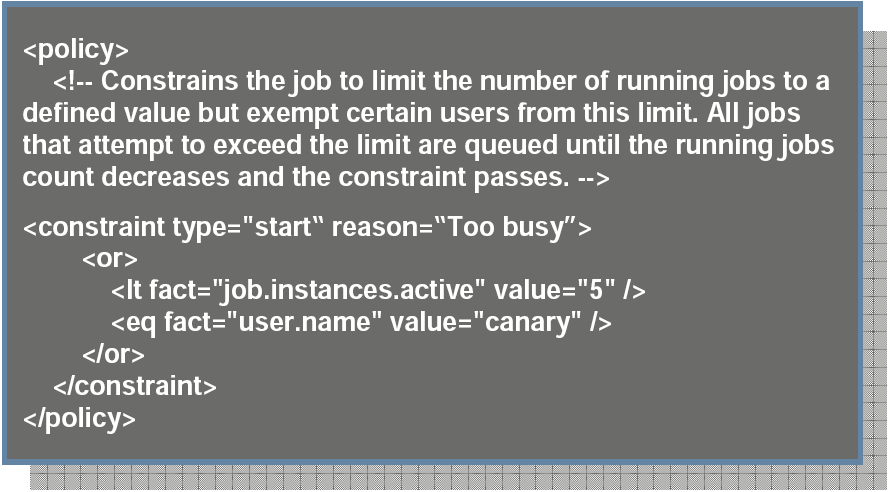
See also:
2.2.3 Global Resource Visualization
One of the greatest strengths of the Novell ZENworks Orchestrator solution is the ability to manage and visualize the entire grid. This is performed through the ZENworks Orchestrator Console and the ZENworks Monitoring System.
The desktop console is a Java application that has broad platform support and provides job, resource, and user views of activity as well as access to the historical audit database system, cost accounting, and other graphing features.
Figure 2-10 The ZENworks Orchestrator Console with Virtual Machine Management Elements
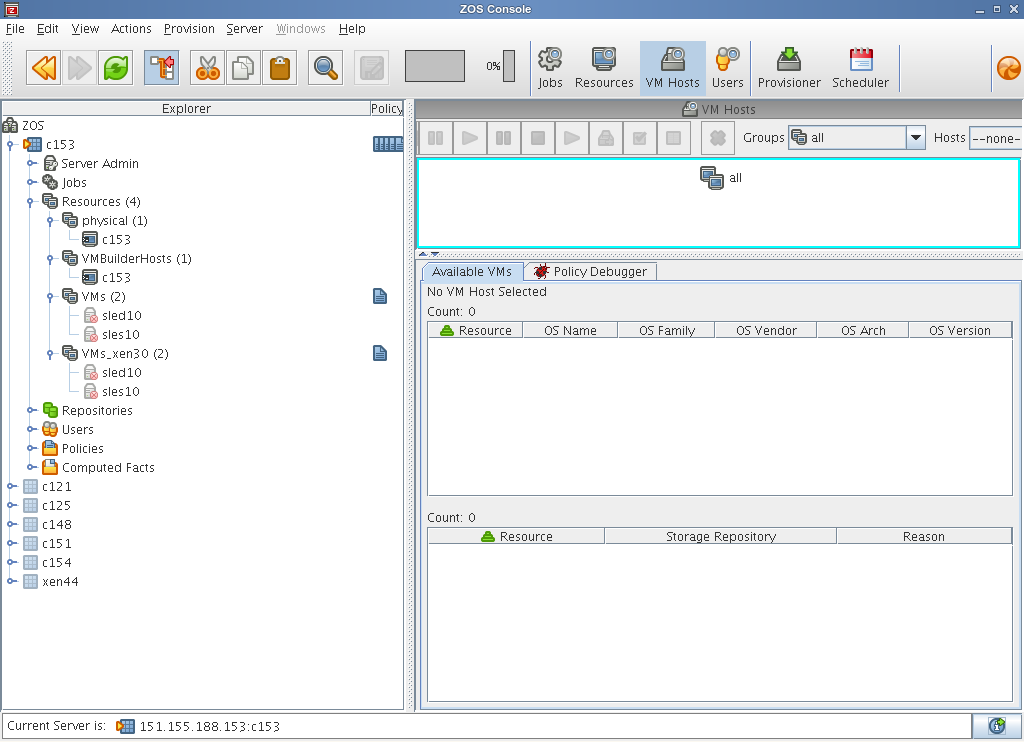
The console also applies policies that govern the use of shared infrastructure or simply create logical grouping of nodes on the grid. For more information about the ZENworks Orchestrator Console, see the Novell ZENworks Orchestrator 1.2 Installation and Getting Started Guide.
The ZENworks Monitoring System provides robust graphical monitoring of all managed virtual resources managed on the grid.
Figure 2-11 The Eclipse ZENworks Monitoring System
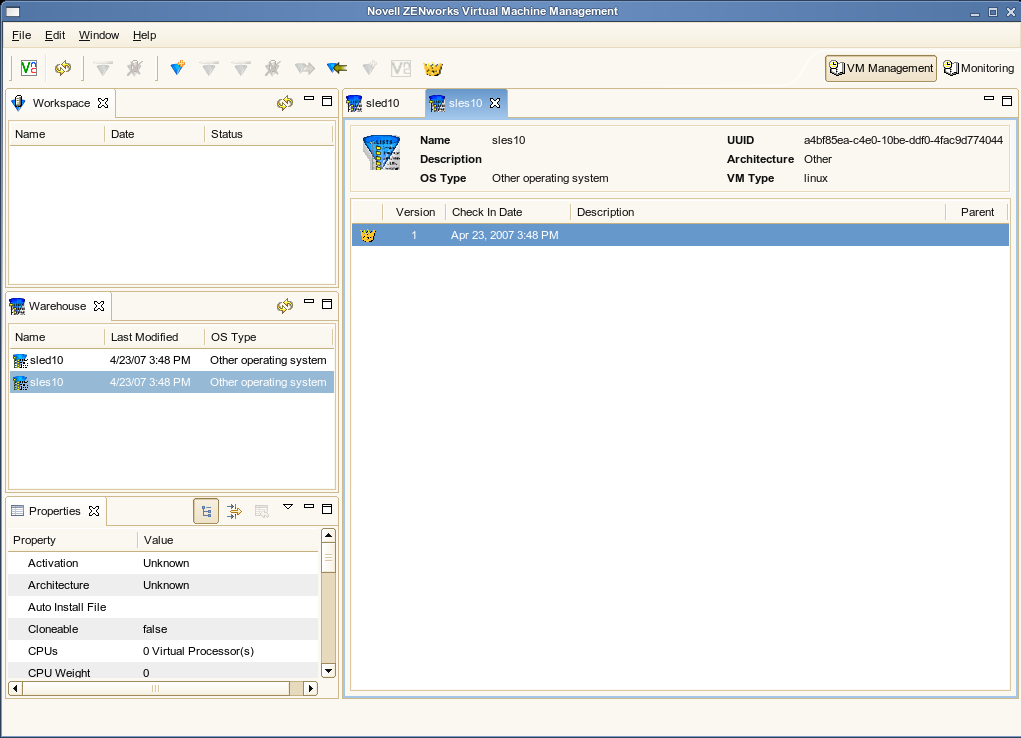
For more information, see the Novell ZENworks Orchestrator 1.2 Virtual Machine Management Guide.
2.2.4 Understanding Job Semantics
As mentioned earlier, ZENworks Orchestrator runs jobs. A job is a container that can encapsulate several components including the Python-based logic for controlling the job life cycle (such as a test) through logic that accompanies any remote activity, task-related resources such as configuration files, binaries and any policies that should be associated with the job, as illustrated below.
Figure 2-12 Components of an Orchestrator Job
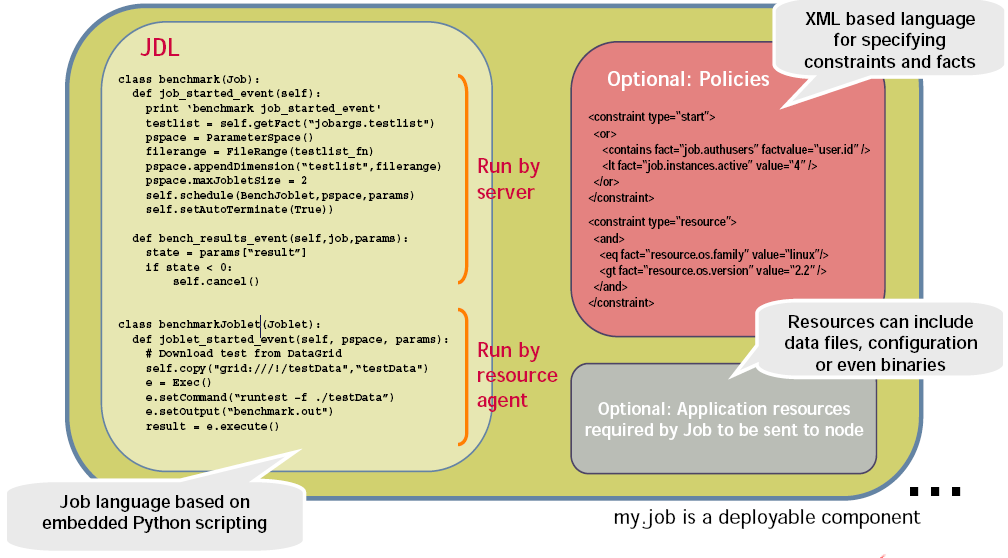
Workflows
Jobs can also invoke other jobs creating hierarchies. Because of the communication between the job client (either a user/user client application or another job) it is easy to create complex workflows composed of discrete and separately versioned components.
When a job is executed and an instance is created, the class that extends job is run on the server and as that logic requests resources, the class(es) that extend the joblet are automatically shipped to the requested resource to manage the remote task. The communication mechanism between these distributed components manifests itself as event method calls on the corresponding piece.
For more information, see Section 2.5.2, Workflow Job Example, Section 7.3.1, Job State Transition Events, and Section 7.10, Communicating Through Job Events.
2.2.5 Distributed Messaging and Failover
A job has control over all aspects of its failover semantics, which can be specified separately for conditions such as the loss of a resource, failure of an individual joblet, or joblet timeout.
The failover/health check mechanisms leverage the same communications mechanism that is available to job and joblet logic. Specifically, when a job is started and resources are employed, a message interface is established among all the components as shown in Figure 2-13.
Optionally, a communication channel can also be kept open to the initiating client. This client communication channel can be closed and reopened later based on jobid. Messages can be sent with the command
sendEvent(foo_event, params, ...)
and received at the other end as a method invocation
def foo_event(self, params)
If a job allows it, a failure in any joblet causes the Orchestrator Server to automatically find an alternative resource, copy over the joblet JDL code, and reestablish the communication connection. A job also can listen for such conditions simply by defining a method for one of the internally generated events, such as def joblet_failure_event(...).
Such failover allows, for example, for a large set of regression tests to be run (perhaps in parallel) and for a resource to die in the middle of the tests without the test run being rendered invalid. The figure below shows how job logic is distributed and failover achieved:
Figure 2-13 A Job in Action
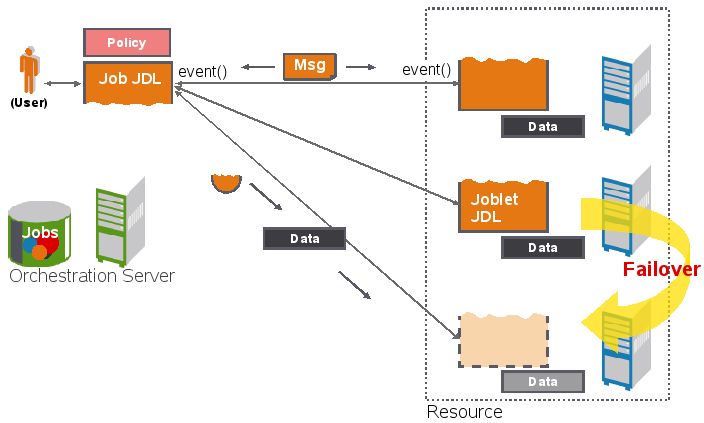
2.2.6 Web-Based User Interaction
ZENworks Orchestrator ships a universal job monitoring and submission interface as a Web application that natively runs on the Orchestrator Server. This application is written to the Orchestrator job management API and can be customized or replaced with alternative rendering as required. The figure belows shows an example of the interface and more details are discussed in The ZENworks Orchestrator Console.
Figure 2-14 The ZENworks Orchestrator Console Management Interface
